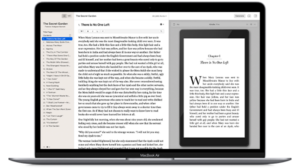 I once read an email to another writer from a zine editor about how he handled manuscripts. “The first thing we do is cut. We cut and cut and cut.”
I once read an email to another writer from a zine editor about how he handled manuscripts. “The first thing we do is cut. We cut and cut and cut.”
The more I edit, the more annoyed I get with that comment because that’s how the editor led his message. Editing does involve cutting, but bragging about it is not the best way to instill confidence in a writer. It reminded me of a college professor I had who bragged he failed 80% of his students. If you’re a college instructor doing your program’s capstone course, and 80% of your students fail, maybe you should consider another line of work. I look at editing the same way.
Now, I’ve known my share of great editors over the years. Ellen Campbell (who gleefully calls herself “the Cutter,” but I’ll get to that in a minute), Jim Thomsen, and Stacy Robinson, my first and still only developmental editor. All three of them make suggestions. And they have good instincts when the writer will have anxiety over a change. Ellen, in particular, wants to be challenged. To her, that’s an opportunity to both teach the writer and learn something.
But going back to my early days writing, I can recall a rather well-respected freelance editor who admitted she felt she had to be openly hostile to a manuscript. Two years into this job, and I still ask myself, “Why?”
Of course, anyone who writes begins with the attitude of red ink and red track changes are “a dagger to the soul.” I’m not making that up. A would-be writer from my days of cosplay (when it was just weird grown-ups in costumes) said that as we made a go of a Klingon-themed fanzine. It’s fine in the beginning. We all get precious about our work. It’s our passion. But there comes a time where, if you’re serious, even if you’re just throwing books up on Amazon, you have to start shedding your artistic pretensions. Everyone thinks it’s cute when you walk around the house clutching the manuscript to that first novel, muttering, “My baby! My baby!” I did that, and I have a rather…complicated attitude toward my first novel. You also have to quit being precious about the prose. Sure, Anne Rice once openly bragged about how “Every word is perfect!” No, it’s not, Anne–May you rest in peace. I’ve read a couple of your books.
In his classic writing book, On Writing, Stephen King outlines what I’ve modeled for novels. First, write with the door closed. King says this is so you can focus on the story. Now, having been the inspiration for a couple of other writers, I can honestly say it’s also so your friends, relatives, and coworkers won’t kill you. Too many writers want everyone else to read excerpts from whatever they wrote today. No one wants to read an unfinished story because you haven’t finished it yet. Trust me, I got burned in the fanfic days for not having a long-ass trilogy fleshed out ahead of time. (I was a notorious pantser until I got into original scifi.)
King suggests cutting 10% of your first draft. Why? You’re throwing in everything because you don’t know what you need. I describe what I do in a copy edit as trimming the fat. In a dev edit or a story analysis, I trim a LOT of fat. But those changes are structural. In a copy edit, I look at it this way: Was is not your friend. Run-on sentences are bad. Droning on and on about some side detail just bores the reader. King is emphatic about zapping anything ending in “-ly.” Some editors get livid about describing eyes moving, though I’ve always found that to be more annoying than helpful.
My personal pet peeve are the walk-ups, first pointed out to me by television writer and producer Lee Goldberg. Lee got annoyed when the star (and executive producer) of a show he wrote for insisted on “walk-ups” or “drive-ups.” Since this actor started out in sports, memorizing dialog was more of a challenge than, say, Henry Winkler, who made up a Shakespeare soliloquy on the fly when he forgot his lines in an audition. It was more training than skill as I recall the guy being a fair actor in action roles (and a couple of turns in comedy.) The star wanted scenes where his character drove to the scene, got out of his car, walked up to the door, and knocked. Like this explanation, the walk-ups took up a lot of space. I’ve noticed them in quite a few manuscripts.
Cutting is trimming the fat. Bragging about cutting is just showing what a bad ass you think you are to the writer. Cutting and explaining why you cut is in service to the reader and helpful to the writer. That 10% King talks about can be trimmed organically and without rancor. All hostility does is instill fear or a strong urge to get away from a person. If it’s the editor, trust me, they’re not going to have a lot of work. If it’s the writer, well, having a few diva moments of my own on that front, I can attest to the backlash you get for it.
 I have something to tell you. It may be hard for you to hear, but as a potential client–mine or someone else’s–you need to hear this. Are you ready?
I have something to tell you. It may be hard for you to hear, but as a potential client–mine or someone else’s–you need to hear this. Are you ready?


 A while back, I wrote about crutch words and the approach I took to weeding them out. A working editor is a work in progress, and I am no exception. I developed a four-word approach to “Words That Must Be Scrutinized!!!” (Cue really loud gong.) The offending words are “suddenly,” “just,” “very,” and “that.” Yes, “that” can be a crutch word. The story analysis project I’m finishing up as I write this also abused “and.” Mind you, the author is an admitted first-time writer who does not speak US English trying to write in US English. English as a first language is weird enough. I get headaches rendering an alien language into Elizabethan English to convey excessive formality, so I get it.
A while back, I wrote about crutch words and the approach I took to weeding them out. A working editor is a work in progress, and I am no exception. I developed a four-word approach to “Words That Must Be Scrutinized!!!” (Cue really loud gong.) The offending words are “suddenly,” “just,” “very,” and “that.” Yes, “that” can be a crutch word. The story analysis project I’m finishing up as I write this also abused “and.” Mind you, the author is an admitted first-time writer who does not speak US English trying to write in US English. English as a first language is weird enough. I get headaches rendering an alien language into Elizabethan English to convey excessive formality, so I get it.



 Tom Clancy head hops like nobody’s business.
Tom Clancy head hops like nobody’s business. Originally posted to Reaper Edits
Originally posted to Reaper Edits